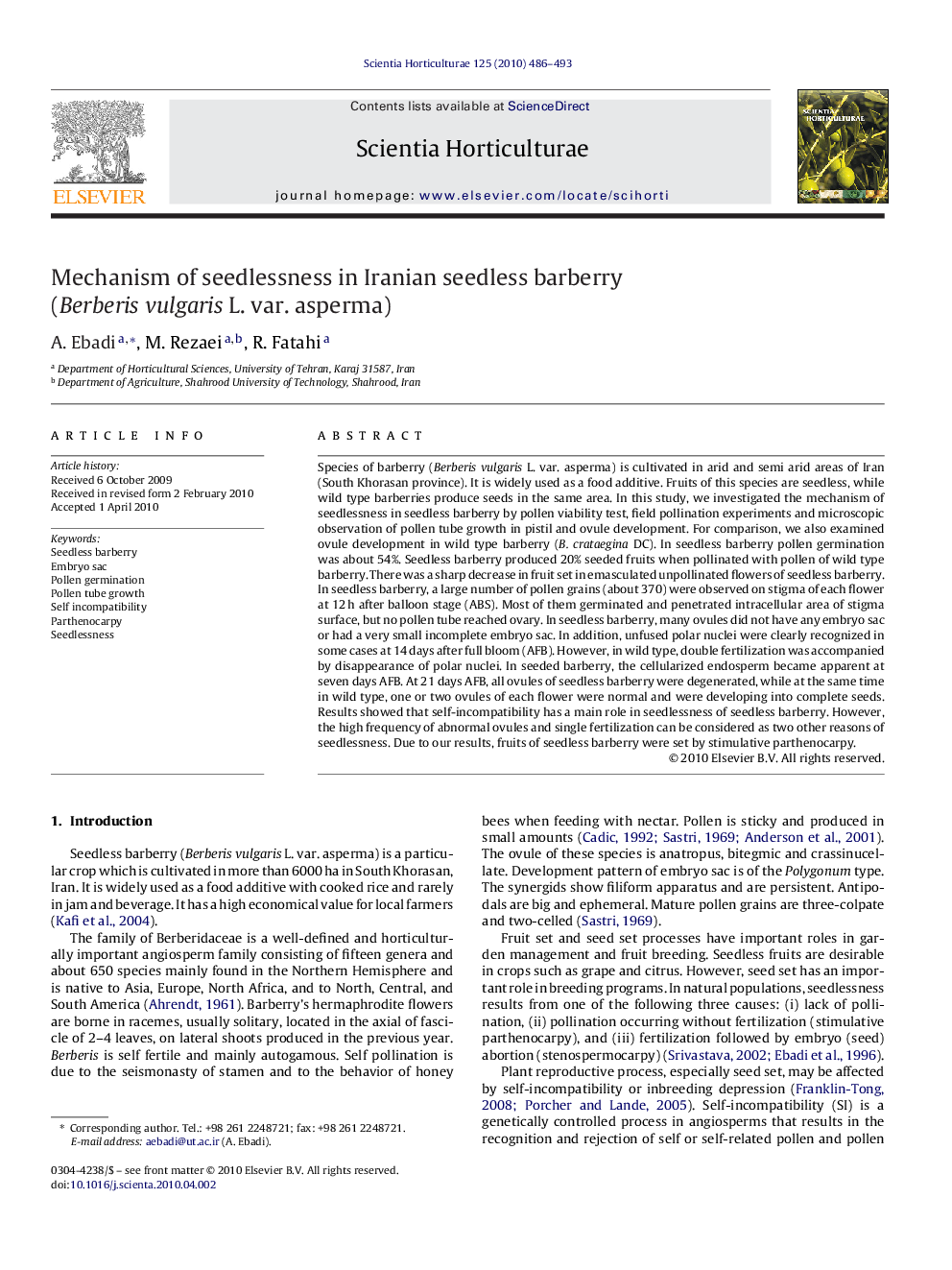| کد مقاله | کد نشریه | سال انتشار | مقاله انگلیسی | نسخه تمام متن |
|---|---|---|---|---|
| 4568702 | 1331309 | 2010 | 8 صفحه PDF | دانلود رایگان |

Species of barberry (Berberis vulgaris L. var. asperma) is cultivated in arid and semi arid areas of Iran (South Khorasan province). It is widely used as a food additive. Fruits of this species are seedless, while wild type barberries produce seeds in the same area. In this study, we investigated the mechanism of seedlessness in seedless barberry by pollen viability test, field pollination experiments and microscopic observation of pollen tube growth in pistil and ovule development. For comparison, we also examined ovule development in wild type barberry (B. crataegina DC). In seedless barberry pollen germination was about 54%. Seedless barberry produced 20% seeded fruits when pollinated with pollen of wild type barberry. There was a sharp decrease in fruit set in emasculated unpollinated flowers of seedless barberry. In seedless barberry, a large number of pollen grains (about 370) were observed on stigma of each flower at 12 h after balloon stage (ABS). Most of them germinated and penetrated intracellular area of stigma surface, but no pollen tube reached ovary. In seedless barberry, many ovules did not have any embryo sac or had a very small incomplete embryo sac. In addition, unfused polar nuclei were clearly recognized in some cases at 14 days after full bloom (AFB). However, in wild type, double fertilization was accompanied by disappearance of polar nuclei. In seeded barberry, the cellularized endosperm became apparent at seven days AFB. At 21 days AFB, all ovules of seedless barberry were degenerated, while at the same time in wild type, one or two ovules of each flower were normal and were developing into complete seeds. Results showed that self-incompatibility has a main role in seedlessness of seedless barberry. However, the high frequency of abnormal ovules and single fertilization can be considered as two other reasons of seedlessness. Due to our results, fruits of seedless barberry were set by stimulative parthenocarpy.
Journal: Scientia Horticulturae - Volume 125, Issue 3, 28 June 2010, Pages 486–493